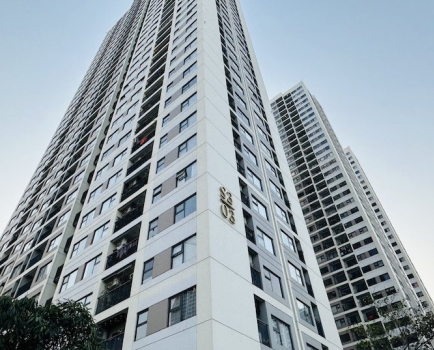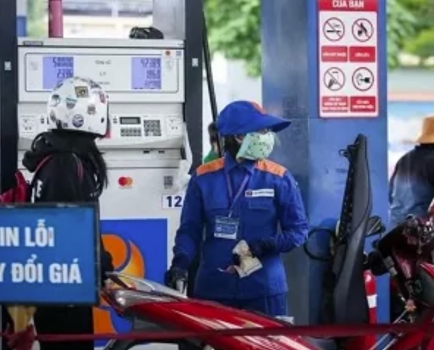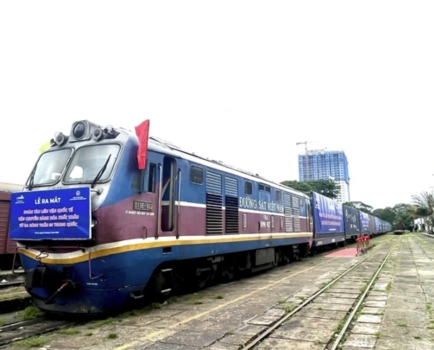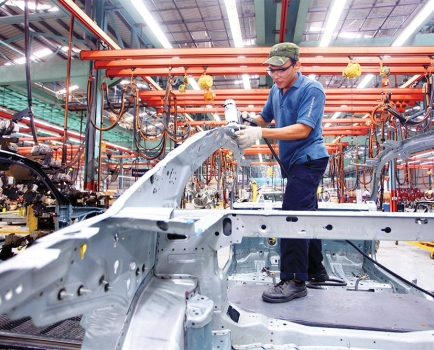Public skeptical as official claims HCMC has escaped severe flooding
Sun, 16 Jun 2019 15:35:00 | Print | Email Share:
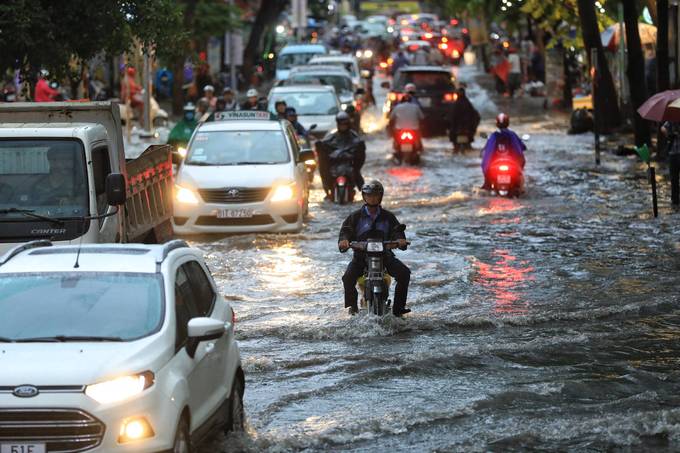
a heavy rain on May 9, 2019. Photo by VnExpress/Huu Khoa.
HCMC vice chairman says the city no longer suffers the serious flooding it used to, but residents are unconvinced.
Uncontrolled urbanization, serious sinking of the city turf, and higher frequency and quantity of rainfall, as well as rising tidal peaks have affected the fight against flooding, Ho Chi Minh City's Vice Chairman Vo Van Hoan said.
"The progress in implementing anti-flooding projects in the city has not met expectations, but objectively speaking, the city no longer has to deal with flooding as severe as it had to seven years ago."
"Some areas that used to suffer heavy flooding in the past are now free from such conditions," Hoan said at a municipal meeting this week.
Nguyen Hoang Anh Dung, deputy director of the city’s management board of urban infrastructure construction and investment, backed Hoan’s assertions and painted a bright picture for the city in its long-standing fight against floods.
He said the city was home to 18 areas flooded during rains and five areas flooded by seasonal tides, and it is expected that by 2020, all the areas will be free of the seasonal scourge.
Nguyen Minh Nhut, a city council member, said what Dung said "is nice to hear" but in fact, works to prevent flooding in the city still have many shortcomings, especially projects that have fallen behind schedule and are not effective as they are not well connected with other infrastructure projects and canals.
For example, 90 percent of a project to set up a drainage system on Mai Xuan Thuong Street in Binh Thanh District has been completed, but for years it could not be complete because the investor has not been able to strike a deal on compensation with just one household.
The water drainage systems inside and outside the Tan Son Nhat International Airport in Tan Binh District are not synchronized and the airport has ended up getting seriously flooded every time it rains heavily, he said.
Another council member, Nguyen Van Dat, concurred. There are sewer systems built to prevent urban flooding but they do not work because they are not connected with the city’s natural canal systems, he said, pointing at Nguyen Van Qua Street in District 12 and Do Xuan Hop Street in District 9, as examples. "These streets get flooded even after having the drainage systems."
Responding to Hoan’s statement, some city residents told VnExpress that they have doubts because in fact, HCMC, currently home to 13 million including migrants, is still flooded easily when there are high tides or heavy rains.
They said they found the vice chairman’s statement conflicting with the facts on the ground, because, from their own experiences, urban flooding in the city has got much worse than before.
City resident Doan Quan Nguyen said in the past, just several places in the city got flooded, now the entire city suffers flooding if it rains for around half an hour.
Another resident Pham Van Chung claimed it is not right to say HCMC has been freed from severe flooding because it has just entered the rainy season and anyone can see that every road gets flooded even when there is just a small rain, not a heavy downpour.
The municipal Department of Agriculture and Rural Development stated early this month that major projects meant to stop the city’s chronic flooding have fallen behind schedule because of delays in land acquisition.
Nguyen Van Truc, director of the department, tasked with appraising the projects, said all of them were stuck at the stage of acquiring land. They include projects to deal with floods caused by high tides and an embankment on the Saigon River in District 2.
In all cases, investors have had to start work in areas where they have already got clear land or the parts that are under water, leaving the areas that are still not cleared for later, he said.
For years scenes of people wading through or getting stuck on flooded streets in their motorbikes or cars during high tides or heavy rains have been common in HCMC.
Laurent Umans, first secretary, water and climate change, at the Dutch embassy in Hanoi, said at a meeting last August that it was possible a major part of the city would lie below sea level in 50 years’ time, turning it into a swamp.
By: Huu Nguyen/VnExpress
---------------------------------------------
Same category News :




